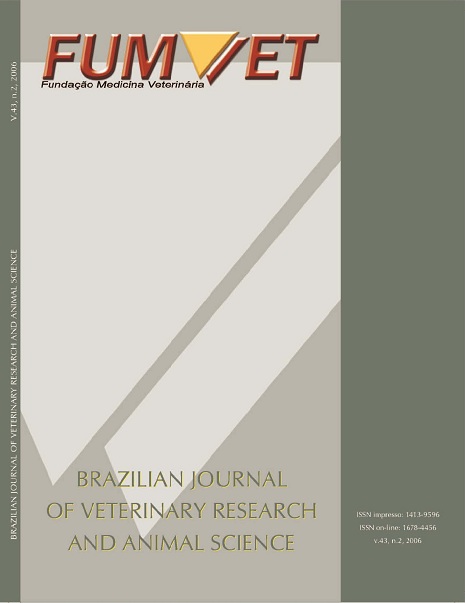Effects of diet supplementation with organic trace minerals on production of laying hens
DOI:
https://doi.org/10.11606/issn.1678-4456.bjvras.2006.26495Keywords:
Layers, Egg (production), Trace mineral, Chelated, PerformanceAbstract
An experiment was conducted to study the effect of organic trace mineral sources supplementation on egg production of laying hens. It consisted of 8 treatments: one treatment with all trace minerals on inorganic form, one treatment with all minerals on organic form and 6 treatments where only one mineral was from organic origem. The trace minerals were: zinc, manganese, iodine, selenium, copper and iron. Corn and soybean meal basal diet was used. 672 Babcock B300 laying hens with 48 weeks were used. The production parameters analyzed were: Feed intake, egg production, egg mass and feed conversion. Data were summarized for 3 periods of 28 days each and analyzed throught SAS. The results for egg production were not different for the tree periods, except for egg mass witch was lowed in the organic iron treatment in the last period (p<0,05). The experiment results suggest that the supplementation with organic minerals did not improve the egg production for laying hens between 48 - 60 weeks of age, when it was compared with inorganic mineral supplementation.Downloads
Download data is not yet available.
Downloads
Published
2006-04-01
Issue
Section
UNDEFINIED
License
The journal content is authorized under the Creative Commons BY-NC-SA license (summary of the license: https://
How to Cite
1.
Sechinato A da S, Albuquerque R de, Nakada S. Effects of diet supplementation with organic trace minerals on production of laying hens. Braz. J. Vet. Res. Anim. Sci. [Internet]. 2006 Apr. 1 [cited 2024 Apr. 24];43(2):159-66. Available from: https://revistas.usp.br/bjvras/article/view/26495





